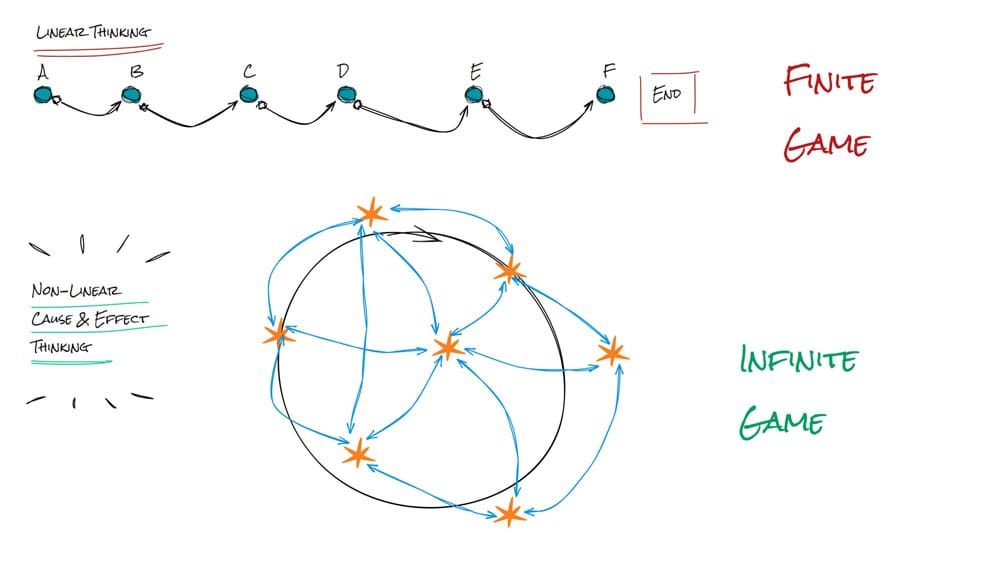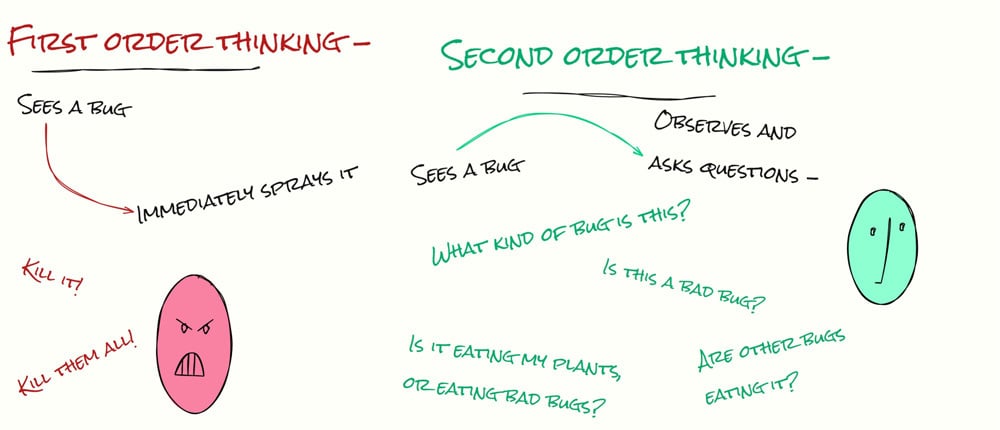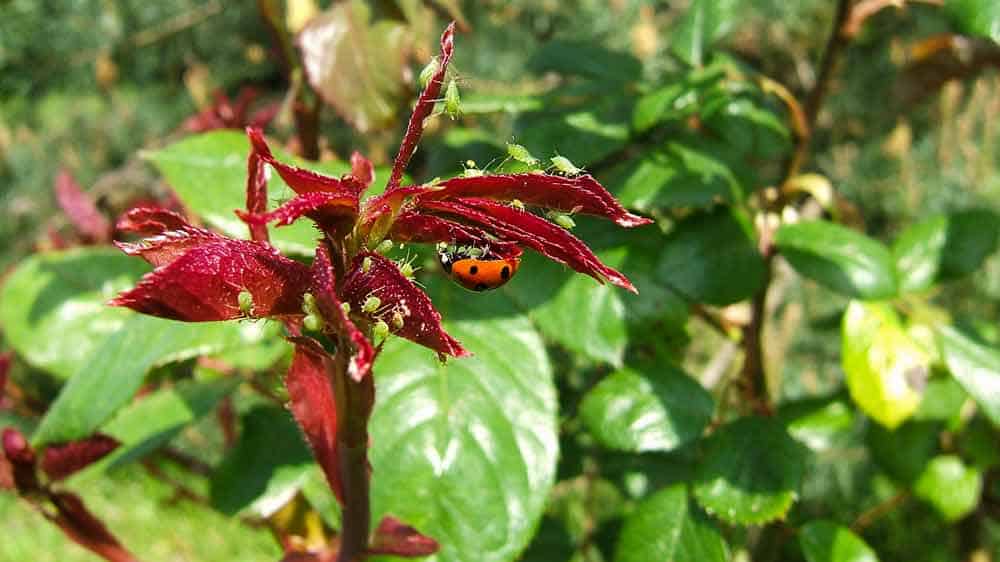A Systems Approach to Gardening Success
It’s Not About Quick Fixes, It’s About Understanding Your Ecosystem
Your garden isn’t just a collection of plants – it’s a miniature world teeming with life. Think of it as a little town where plants, insects, microbes, soil, and even the weather all work together, or sometimes against each other. This idea of understanding the whole garden ecosystem, not just the individual parts, is what we call a systems approach to gardening.
Trying to solve garden problems by only focusing on one tiny part is like trying to fix traffic in your town by getting rid of all cars.
Sure, the traffic jams are gone, but now everything else grinds to a halt! Gardens function the same way – every element, from the tiniest bug to the way you water, plays a role in the overall health of your little ecosystem.
Another way to put it is to think about relationships and interconnectedness, not simple functions. In a complex, interrelated system like your garden, everything is interconnected.
Gardening is an infinite game, not a finite one.
- A finite game has known players, fixed rules, and an agreed-upon objective. There is a beginning, middle, and end, with winners and losers.
Baseball is a good example.
Looking at gardening as a finite game means that you only have this season to garden, so you try to grow as much as possible by any means because there are no more seasons after this one.
When put this way, we immediately see that this is an extremely short-sighted way of gardening, yet how many gardeners try to wring as much as possible from their garden this season?
- An infinite game has known and unknown players, meaning new players – plants, insects, birds, soil organisms – can join anytime. The rules are changeable, and the objective is to keep playing and to stay in the game as long as possible.
The truth is you are probably already an infinite player. The infinite game is cooperative, in which we all move forward or fall back together. It encourages connections between people and the natural world.
Marriage, education, and life are examples of infinite games.
The classic sayings “There’s always next year” and “It will be better next year” might have originated from a desire to keep playing the garden game.
The ultimate goal of the infinite game of gardening is to keep it meaningful and enjoyable so that we can continue for as long as possible.
For better success, we need to view gardens as complete ecosystems rather than individual components that require management, weeding, fertilization, or spraying.
How Simple Solutions Backfire and What to Do Instead
It’s natural to want a thriving garden, and quick fixes seem tempting. However, gardens are complex ecosystems, and unlike simple problems, hasty solutions often cause more harm than good, leading to more significant challenges later on.
The classic example is the aphid attack—you lift a leaf in your garden, find an infestation of eggs and aphids on several leaves, and then look around to see those little pests devouring your tomatoes or peppers. You pull out the latest and greatest insecticide, commence spraying with vigor, and solve the problem!
Or did you?
That spray didn’t just target aphids—it likely killed other beneficial insects. Now, you might have an even worse pest infestation.
A few days to a week later, you notice a drop in lacewings, bees, ladybugs, and almost all other beneficial insects.
Now, you face the expense and work of buying and reintroducing beneficial insects or resigning yourself to the prospect of a significantly reduced garden harvest this season.
Here is the difference between first-order and second-order thinking.
When you isolate a problem or challenge – e.g., pests, disease, etc.- and treat only that part separately – spraying the aphids – the entire system doesn’t necessarily improve and frequently worsens.
– First-order thinking is the gut reaction to fix the immediate problem without regarding what happens afterward.
– Systems thinking, or second-order thinking, is about stepping back and asking, “If I do this, what happens next, and then what?” It’s about finding solutions that work harmoniously with your garden instead of disrupting its natural balance.
“And Then What?” – The Power of Foresight
Second-order thinking transforms how you approach garden challenges. Instead of reacting immediately, you pause and are more deliberate, considered, and measured.
Before reaching for that spray bottle, take some time to observe –
- What’s happening with your plants?
- Which insects are around—the good, the bad, and the ones you’re unsure of?
- Are there signs of disease or nutrient problems?
Understanding the ‘why’ behind the issue will help you find solutions that address the root cause instead of just bandaging the symptoms.
Remember– gardening is a marathon, not a sprint.
Real success is about more than getting the largest possible harvest this season at any cost. It’s about building a healthy, resilient garden that you can enjoy for years to come.
We all make mistakes, even experienced gardeners! The key is to expect unexpected things to happen and learn from them.
A Second-Order Solution for Aphids
Let’s go back to those aphids for a second. Instead of blasting everything with insecticides, let’s invite nature in to help us.
Introducing beneficial insects like ladybugs and lacewings is like having a tiny aphid-eating army patrolling your garden. Also, planting flowers that attract beneficial insects creates a welcoming environment for them to thrive. It’s a win-win: you get beautiful flowers and create a natural pest-control system!
The Case of the Stressed Tomato Plant
Your tomato plant, which should be bursting with juicy fruit, looks a bit sad. It’s drooping slightly, some leaves are turning yellowish, and it doesn’t seem to have the same “oomph” as your neighbor’s thriving tomato patch.
It turns out that stressed-out plant isn’t just having a bad day; it’s broadcasting a distress signal that attracts pests like spider mites and aphids. These—and most other—insects have incredible senses, designed to pick up on the chemical cues that signal a plant in trouble—it’s like they can smell weakness!
Getting Practical – Restoring Health, Preventing Pests
So, what would a systems approach look like for our stressed-out tomato? First, check the basics – is it getting enough water, especially during heatwaves? Does it have afternoon shade to reduce heat and sun stress? Once we’ve fixed the underlying stress, that tomato plant will naturally build up its defenses. It might still get the occasional bug, but a healthy plant can usually handle a bit of nibbling without collapsing. This preventative approach is a long-term, sustainable way to keep pests in check.
Let’s get our hands dirty and translate systems thinking into action. Remember our sad, stressed-out tomato plant? Our first step should be close and careful observation. Start with the basics –
- Soil Fertility Check—Healthy, fertile soil is the foundation of a thriving garden. Does your tomato have rich, well-draining soil with plenty of organic matter (like compost)? This provides essential nutrients, encourages beneficial soil life that helps plants thrive, and improves the soil’s ability to hold moisture – all crucial factors for plant health and resilience.
- Soil Moisture Check—Is the soil dry at a finger’s depth in the early afternoon? Are the leaves curling – either just starting or almost curling up? Tomato plants need consistent moisture, especially when it’s hot, and they’re producing fruit. Consistent soil moisture at the root level is critical to helping the plant move nutrients and moisture into the plant and fruit. In the heat of summer, a shallow sprinkle every day just won’t cut it.
- Soil Cover Check—Is the soil covered from the plant stem outward past the reach of the furthest leaves? Bare soil quickly evaporates moisture during the day’s heat, stressing the roots and the plant. Aim for at least 2 inches of mulch to insulate the soil and the plant’s roots to keep moisture consistent.
- Nutrition Assessment—Are the leaves a healthy green, or are they fading or yellowing? This could signal a nutrient deficiency that’s weakening the plant. A drink of milk and molasses solution or a light application of diluted fish emulsion might be just what it needs.
- Location Evaluation—Is the tomato getting enough sun but not too much? Too much shade weakens a plant, while scorching afternoon sun can also be stressful. In hotter climates, afternoon shade can transform tomatoes and peppers from struggling to thriving and producing.
Once we’ve addressed those fundamentals, the tomato can start working on getting healthy again. Think of it like when you recover from being sick – you slowly regain your strength. As the tomato plant perks up, its natural defenses kick in. A pest may still try a few nibbles, but a healthy plant can usually handle minor damage without collapsing.
This preventative approach isn’t about total pest elimination (which is undesirable anyway!), it’s about creating a resilient garden where plants can tolerate challenges and bounce back quickly.
Why This Matters for Systems Thinking
These examples teach us a few important things –
When we see bugs feeding on our plants, it’s natural to feel frustrated and want to blame them for damaging our garden. However, it’s important to remember that bugs like aphids simply take advantage of a vulnerable target. The root of the problem lies in the health of the plant itself. If a plant is weak or already struggling, it becomes an easy target for pests. Therefore, instead of blaming the insects, we must focus on improving the plant’s overall health and resilience to prevent future pest infestations.
Addressing the underlying issues—the plant’s health—can create a more robust and sustainable garden.
Instead of applying temporary solutions like spraying pesticides to kill pests, it is better to think holistically. By zooming out and thinking about the bigger picture – like asking ourselves, “How do I help this tomato plant become so strong and healthy that pests mostly leave it alone?” we reduce the need for such interventions.
In our gardens, we must realize that we are not observers but active participants. Every action in the garden, no matter how small, can significantly impact the overall health of the plants and the ecosystem as a whole. For instance, using too much fertilizer or pruning at the wrong time can cause undue stress to the plants, making them more vulnerable to pests and diseases. To create a healthy and thriving garden, we need to understand how our actions can affect the garden ecosystem and take steps to minimize any negative impacts.
Doing so can create an environment where pest problems are much less likely to occur, allowing our plants to grow and flourish naturally.
Changing Your Viewpoint for Lasting Results
Adopting systems thinking is a potent tool for any gardener. It may feel slower initially since you’re not just grabbing the nearest spray bottle, but it pays off! You’ll start to see the interconnectedness within your garden, making smarter choices that support the whole system. Not only will you spend less time fighting problems, but you’ll also enjoy a truly thriving, healthy, and beautiful garden space.






